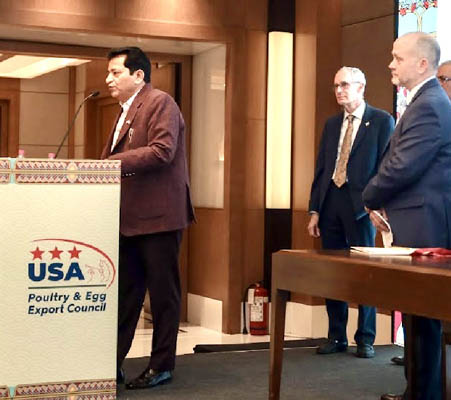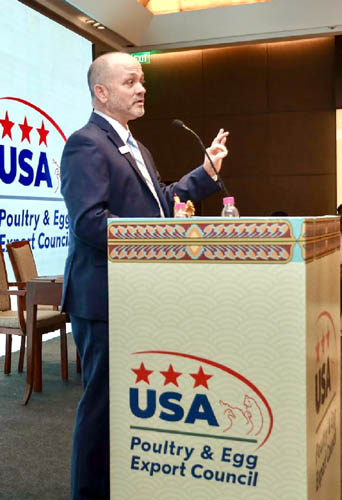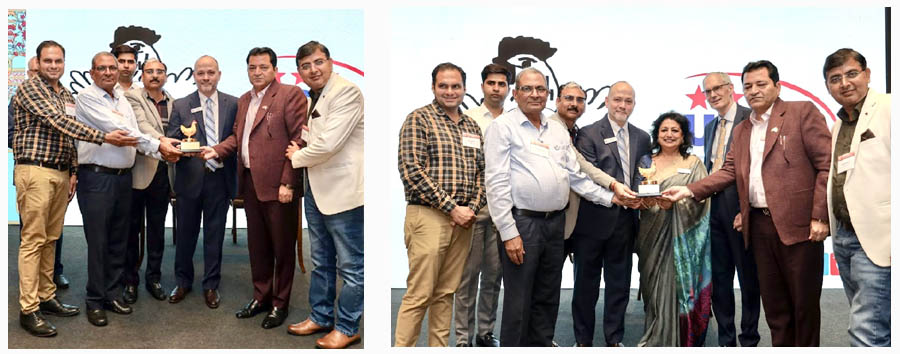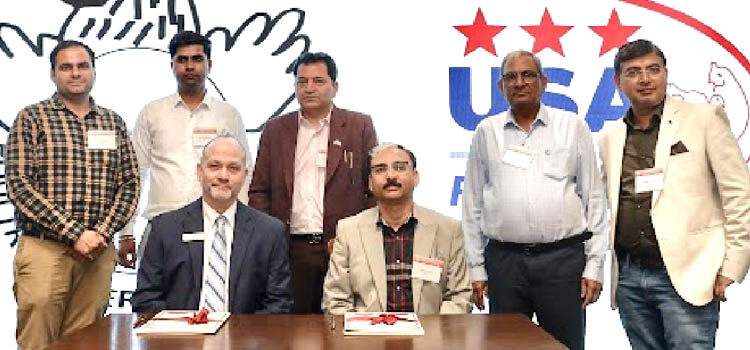The domestic poultry industry has bounced back since June 2020 after grappling with a tough period in the first six months of 2020, amid rumours and lockdown because of Covid-19, leading to a sharp decline in broiler demand and realizations.
By Ricky Thaper
Poultry industry has witnessed fastest growth amongst agriculture and allied sectors in India. While the production of agricultural crops has been rising at a rate of 1.5 to 2 %t per annum, that of eggs and broilers has been rising at a rate of 8 to 10 % per annum. According to Basic Animal Husbandry statistics, 2019 released by the Department of Animal Husbandry, the poultry meat production was reported by 4.06 million tones in 2019-20, which is an increase of 7.8% increase from the previous year.
Directly and indirectly this sector provides employment to over six million small and medium farmers, who are mostly engaged in contract farming system under larger integrators and there are around three million farmers engaged in backyard poultry as per 20th Livestock Census.
The share of the poultry sector in the total Gross Domestic Product (GDP) is approximately 1% and 11.70% in the livestock GDP. According to the National Action Plan for egg and poultry – 2022 for Doubling Farmers’ Income by 2022 prepared by Department of Animal Husbandry, poultry sector in India is valued at about Rs.1,00,000 crore. Poultry sector in India can be broadly divided into two sub-sectors – commercial sector (80% of the total market share) and backyard poultry (20% of the total market share).
India is the fifth largest producer of broilers. The increase in the average income and the urban population has led to a significant increase in the poultry demand and a steady increase in consumption over the years. Poultry meat is the fastest growing component of global meat demand, and India, the world’s second largest developing country, is experiencing rapid growth in its poultry sector. The emergence of vertically integrated poultry producers that have reduced consumer prices by lowering production and marketing costs. In 15 major India cities alone account for 62% of all poultry meat consumption.
Lockdown adversely impacted poultry industry
Even before India reported the first case of COVID-19, the rumours of poultry birds as the likely carrier of the virus widely circulated in social media had led to reduced demand of the chicken meat in several parts of the country especially in the month of February, 2020. The clarification issued by different agencies that eating chickens is quite safe, however, could convince the consumers to a large extent. The poultry industry in India hit hard because of a nation-wide lock-down to stop the rapid spread of COVID19 virus. This lock-down has disrupted the entire supply chain.
The poultry industry which had witnessed steady growth rate because of rising consumer demand for protein rich food especially in the last two decades or so, has incurred huge losses since the beginning of the 2020. The losses incurred by Indian poultry industry is mainly attributed to sharp decline in demand (because of supply disruption as well as fear of COVID19 virus spread), realization and profitability.
The liquidity condition of all the stakeholders in the poultry value chain – farmers, feed suppliers and retailers had remained precarious. The drop in demand and supply chain disruption especially hit the smaller farmers and many of these units closed down. Till May, 2020, the industry was looking at a bleak future.
To bring back the poultry sector into some short of normal operations, both the Central as well as the State Government provided policy support through declaring supply of livestock and poultry products under essential services, ensuring huddle-free interstate transport of poultry produce.
The situation changed sharply since June, 2020 mainly because of rising demand of poultry meat and eggs as doctors advised people to take protein rich food for improving immunity against the COVID19 virus. As a major chunk of the working population continued to be Work from Home (WFH) mode, the domestic chicken consumption has seen a sharp rise. In the last six months or so, when all the COVID19 restrictions were removed, the demand for hygienic and quality poultry products grew sharply leading to a sharp spike in sales of online retail players.
Many new online retail players with their dedicated sourcing as well as modernised processing facilities offered quality poultry meat at the doorstep of consumers. Thus, many farmers went for ‘contract farming’ offered by many players. Even demand for poultry meat has been robust. Many who used to consume vegetarian food have commenced consuming poultry meat and eggs. The consumer demand for poultry meat and eggs started picking up from June and post Navratras & Onam festivals witnessed a sharp spike. The demand for poultry meat and eggs have been rising along with a rise in farm gate prices. The onset of winter months also pushed up the demand for poultry meat and eggs.
Poultry meat a vital source of protein
Poultry is a key source of protein and vitamins and minerals, such as iron, selenium, zinc, and B vitamins. It is also one of the main sources of vitamin B12. It has several advantages as half of the fat from chicken meat is made up of the desirable monounsaturated fats, and only one-third of the less healthy saturated fats. Chicken meat is therefore seen as a healthy meat. Chicken meat does not contain the trans-fats that contribute to coronary heart disease. Poultry meat is rich in the omega-3 fats and is an important provider of the essential polyunsaturated fatty acids (PUFAs), especially the omega (n)-3 fatty acids.
Sensing opportunities, many poultry players have set up new processing plants and the robust demand in the winter months would definitely see the poultry industry operating at a level witnessed prior to COVID19 emergence in the global scene. With the huge spike in demand and demand for quality products rising, the industry would soon witness growth in the range of 8 – 10% annually.
Poultry meat production (in million tonne)
| 2009-10 |
2.08 |
| 2010-11 |
2.19 |
| 2011-12 |
2.48 |
| 2012-13 |
2.68 |
| 2013-14 |
1.92 |
| 2014-15 |
3.05 |
| 2015-16 |
3.26 |
| 2016-17 |
3.46 |
| 2017-18 |
3.76 |
| 2018-19 |
3.62 |
| 2019-20 |
4.06 |
Source: Department of Animal Husbandry
(Author is Treasurer, Poultry Federation of India & working in Poultry Industry for last 34 years).
 Mr. Ricky Thaper, Treasurer, Poultry Federation of India highlighted the significance of this partnership in addressing critical nutritional needs and fostering international cooperation in the poultry industry. Mr. Thaper said that this occasion marked the beginning of what promises to be a fruitful collaboration aimed at enhancing nutritional standards and promoting economic growth in the poultry sector.
Mr. Ricky Thaper, Treasurer, Poultry Federation of India highlighted the significance of this partnership in addressing critical nutritional needs and fostering international cooperation in the poultry industry. Mr. Thaper said that this occasion marked the beginning of what promises to be a fruitful collaboration aimed at enhancing nutritional standards and promoting economic growth in the poultry sector. By combining their expertise, both organizations aspire to raise awareness about the nutritional advantages of poultry products.
By combining their expertise, both organizations aspire to raise awareness about the nutritional advantages of poultry products.






